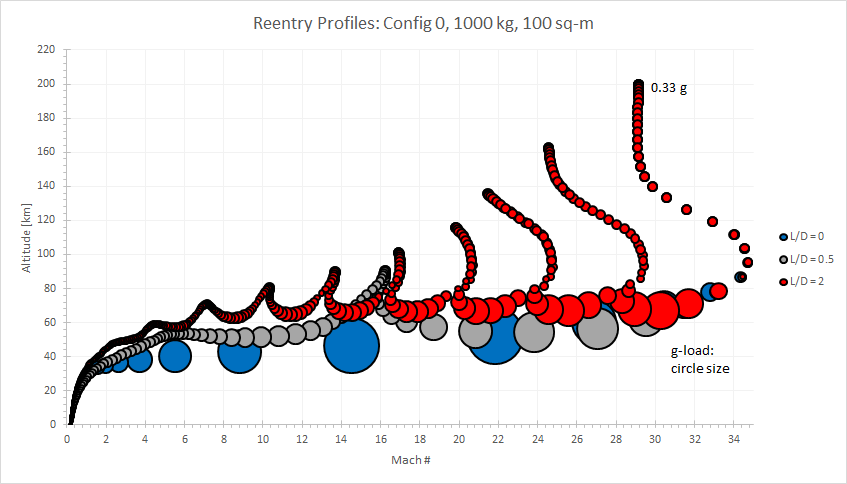Landing on Mars is a difficult engineering problem. A recent conceptual project demonstrated this reality through the atmospheric reentry profile. In other words, assuming that your spacecraft approaches Mars at 200 kilometers and 6.5 kilometers per seconds, what is the altitude-velocity profile during the reentry trip?
Complicating the situation is an observation that your vehicle’s aerodynamics strongly affect the profile. In particular, increasing the life decreases the observed g-load, but leads to atmospheric skip when the lift is not controlled.
A ballistic reentry vehicle should expect a maximum g-load above 10 in the 50 km altitude region. This conceptual analysis strongly suggests that manned reentry to Mars will require hypersonic aerodynamics generation of a lift over drag (L/D) ratio in the 0.5 range.

